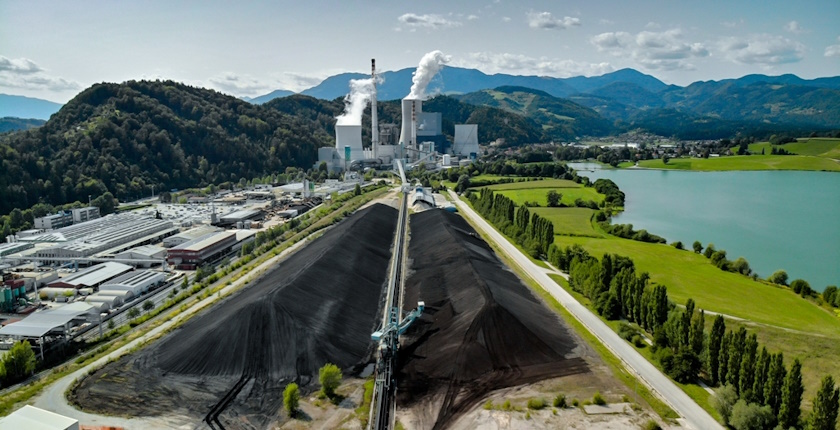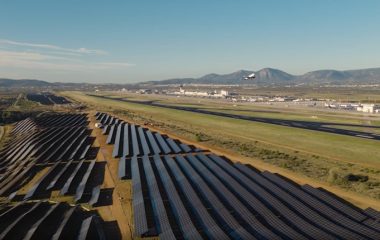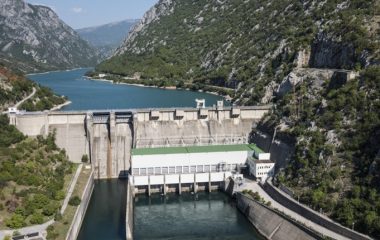
Coal mine Velenje and coal power plant Šoštanj (photo: HSE)
The Government of Slovenia will provide EUR 403 million to save the Šoštanj coal power plant and coal mine Velenje from bankruptcy and will take over both entities from state-owned power utility Holding Slovenske Elektrarne (HSE). The move is part of the coal phaseout process, which the country aims to complete it by 2033, but it may end much sooner.
Representatives of HSE and energy experts have been warning for years that Termoelektrarna Šoštanj (TEŠ), the operator of Slovenia’s only remaining coal power plant, is struggling in its operations. One of the reasons is that its production costs, burdened by carbon allowances, have made it uncompetitive in the market. Losses have been exceeding EUR 100 million per year.
Studies are under development since at least the beginning of the year to prepare for the possibility of separating TEŠ and coal mine Premogovnik Velenje from HSE. In May, Prime Minister Robert Golob acknowledged that TEŠ and Velenje may end operations before the expected closure in 2033.
The government revealed in a new statement that it expects TEŠ and Premogovnik Velenje to go bankrupt early next year. It adopted a bill to provide subsidies and transitional financing for an accelerated and just transition toward a coal exit and beyond it. The legislation envisages a transfer of the two entities into direct state ownership.
TEŠ will primarily produce heat and operate through April 2027
The bill stipulates social security and job protection for employees in the mine and the thermal power plant, according to the government. It said it would enable the inhabitants of the Šalek valley to live decently. The proposal was prepared by the Ministry of the Environment, Climate and Energy.
The Šalek valley is part of the Savinja and Šalek region (in Slovenian language: Savinjsko-šaleška regija – SAŠA). It is one of the country’s two coal regions, the other one being Zasavje, eligible for support for a just transition under European Union rules.
About EUR 324 million will be allocated to support the production of heat
Through April 2027, TEŠ would primarily provide heat for district heating for the Šalek valley – more precisely, the municipalities of Velenje and Šoštanj, the proposition adds. About EUR 324 million would be allocated to support the production of heat.
It would prevent the bankruptcy of the power plant and mine, which was expected at the beginning of next year at the height of the winter heating season, the government said.
The initiation of bankruptcy proceedings would jeopardize jobs and the employees’ families and leave 35,000 inhabitants and all public institutions and companies without heating.
The government is preparing two more laws
In addition to the EUR 324 million, EUR 79 million is required to pay off TEŠ’s loans, the government stressed. Giving up ownership over TEŠ and the mine will relieve HSE of burden and enable it to compensate the state for the aid, the document adds.
The new bill is a transitional solution until the adoption of measures for a just coal phaseout, the restructuring of the area’s economy and finding alternative sources for heat production, according to the government. It said it would provide time for the region to resolve key issues regarding the just transition, it added.
HSE: Continued aid to TEŠ and the mine would be illegal state aid
The measures are part of the upcoming legislation facilitating a gradual closure of the Velenje coal mine and the restructuring that will enable the development of the Savinja and Šalek region, the Government of Slovenia stressed.
Of note, HSE said in September that the results of an analysis of the operation of the company’s thermal division showed TEŠ and Premogovnik Velenje would become unprofitable due to changes in the market and a drop in electricity prices below their cost of production.
The holding pointed out that from January 1, 2025, it wouldn’t be able to fund the uninterrupted operation of the two entities, arguing that such state aid would be illegal according to EU law.


















Be the first one to comment on this article.